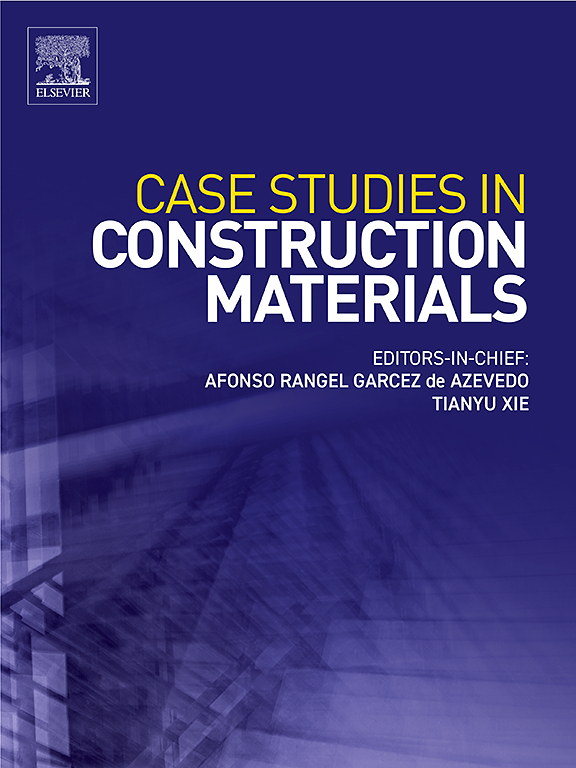石膏性黄土的化学和热稳定性:天然环境友好材料(沸石和石膏)和水泥的比较研究
IF 6.6
2区 工程技术
Q1 CONSTRUCTION & BUILDING TECHNOLOGY
引用次数: 0
摘要
石膏性黄土在环境湿度变化下表现出复杂和不可预测的特性,对岩土工程提出了重大挑战。化学稳定和热稳定是石膏性黄土稳定的常用方法。水泥和石灰等普通材料价格昂贵且不可持续。本研究以减少碳足迹的环境友好型稳定剂沸石和常用稳定剂水泥为研究对象,对石膏性黄土进行了稳定研究。采用两种不同的方法来活化沸石:氢氧化钠和与水泥共活化。分别用3 %、5 %、7 %和10 %的稳定剂稳定了石膏土,并通过无侧限抗压强度、纵波速度、XRD和SEM/EDAX等多种环境条件对稳定土的干湿性能进行了评价。结果表明,沸石在低石膏含量和高石膏含量的土壤中表现出有效的稳定性,而不像水泥,这表明了稳定土壤的局限性。水泥稳定化导致钙矾石矿物的形成,水泥含量的增加促进钙矾石的形成。相比之下,沸石的稳定可以防止钙矾石矿物的形成,并随着沸石用量的增加而增强土壤强度。而当沸石部分替代水泥时,土壤强度的替代水平可达30 %;超过这个水平,较高的替代率导致强度下降。沸石稳定的土壤中没有钙矾石,加上沸石独特的限制溶解石膏浸出的能力,解释了与水泥相比,它在干湿循环中的优越性能。在热稳定中,试样中石膏含量的增加会导致单轴抗压强度的增加。研究表明,沸石可以有效改善石膏土的性质,与传统的水泥稳定方法相比,具有独特的优势,但不是一种环保和可持续的方法。本研究介绍了沸石作为一种双活化、环保的石膏性黄土稳定剂的新应用,为传统的水泥基方法提供了一种可持续的、技术上有效的替代方法。本文章由计算机程序翻译,如有差异,请以英文原文为准。
Chemical and thermal stabilization of gypseous loess soils: Comparative study of natural environmental friendly materials (zeolite and gypsum) and cement
Gypseous loess soils exhibit complex and unpredictable behavior under environmental moisture variations, posing significant challenges in geotechnical engineering. Chemical stabilization and thermal stabilization are commonly used methods for stabilizing gypseous loess soils. Common materials such as cement and lime are expensive and unsustainable. This study investigates the stabilization of gypseous loess soils by zeolite as an environmentally friendly stabilizer to reduce carbon footprint and cement as a common stabilizer. Two distinct methods were employed to activate zeolite: sodium hydroxide and co-activation with cement. Gypseous soils were stabilized by 3 %, 5 %, 7 %, and 10 % stabilizing agents, and the performance of the stabilized soils was subsequently assessed under various environmental conditions such as wetting-drying by unconfined compressive strength, P-wave velocity, XRD, and SEM/EDAX tests. The results reveal that zeolite exhibits effective soil stabilization for low and high gypsum content, unlike cement, which demonstrates limitations in stabilizing soils. Cement stabilization leads to the formation of ettringite minerals, and increasing cement content increases ettringite formation. In contrast, stabilization with zeolite prevents the formation of ettringite minerals and enhances soil strength as the zeolite dosage increases. However, when zeolite partially replaces cement, soil strength improves up to a substitution level of 30 %; beyond this level, higher substitution ratios lead to a decrease in strength. The absence of ettringite in zeolite-stabilized soils, along with zeolite's unique ability to limit the leaching of dissolved gypsum, explains its superior performance during wetting-drying cycles compared to cement. In thermal stabilization, an increase in the percentage of gypsum present in the sample leads to an increase in uniaxial compressive strength. The study revealed that zeolite could effectively improve gypseous soil's properties and exhibit unique advantages over conventional cement stabilization, which is not an environmentally friendly and sustainable method. This study introduces a novel application of zeolite as a dual-activated, eco-friendly stabilizer for gypseous loess soils, offering a sustainable and technically effective alternative to traditional cement-based methods.
求助全文
通过发布文献求助,成功后即可免费获取论文全文。
去求助
来源期刊

Case Studies in Construction Materials
Multiple-
CiteScore
7.60
自引率
19.40%
发文量
842
审稿时长
63 days
期刊介绍:
Case Studies in Construction Materials provides a forum for the rapid publication of short, structured Case Studies on construction materials. In addition, the journal also publishes related Short Communications, Full length research article and Comprehensive review papers (by invitation).
The journal will provide an essential compendium of case studies for practicing engineers, designers, researchers and other practitioners who are interested in all aspects construction materials. The journal will publish new and novel case studies, but will also provide a forum for the publication of high quality descriptions of classic construction material problems and solutions.
 求助内容:
求助内容: 应助结果提醒方式:
应助结果提醒方式:


